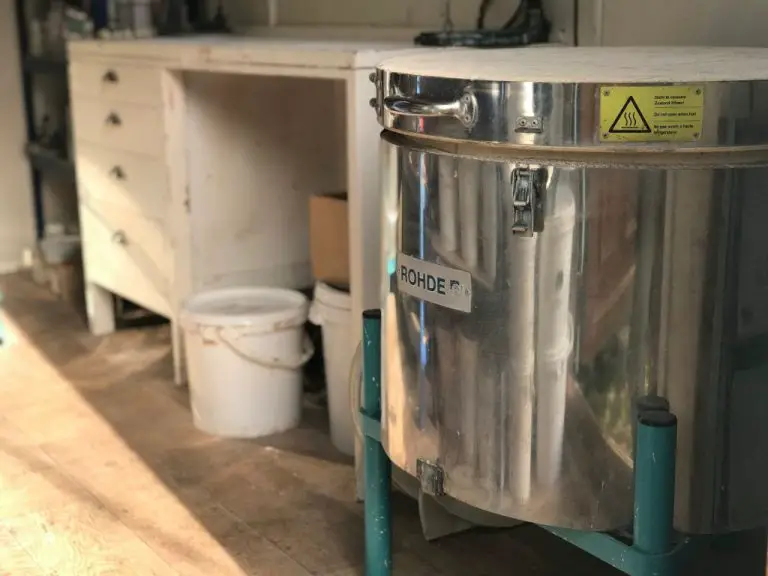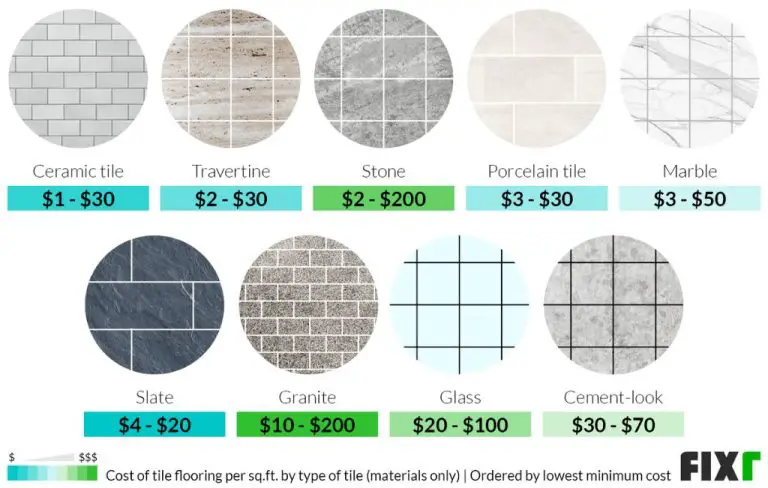Can You Stain Clay With Coffee?
Clay is an earthy material made up of fine-grained minerals that can be molded when wet and hardened by firing or baking. Staining clay refers to adding color to the surface of clay objects using various liquid substances like coffee. The purpose of this article is to provide a comprehensive guide on using coffee to stain clay. We’ll cover the reasons for staining with coffee, how it works, the best types of clay to use, application methods, tips for success, and sample projects.
Why Stain Clay with Coffee?
Staining clay with coffee can provide some beautiful aesthetic effects. The warm brown tones of the coffee can give clay an antique, weathered, or aged appearance. Coffee staining is therefore great for creating crafts, miniatures, or models with an old-world, vintage vibe. The variegated coloring that results from staining with coffee can add visual interest, depth, and dimension to otherwise plain clay pieces.
Coffee staining clay is also an easy and accessible way to antique your clay creations. Rather than using specialty glazes or paints, a cup of coffee can transform the look of polymer or air-dry clay. The organic staining effect of the coffee penetrates the clay and creates variation in tone that would be difficult to achieve with paint alone.
Overall, coffee staining clay adds old world charm and a sense of history to your clay crafts. The natural antiquing effect gives depth, nuance, and character to clay in a way that celebrates imperfections and appreciates signs of aging.
How Does Coffee Stain Clay?
Coffee contains acids that react with the clay material, producing a staining effect. Specifically, the tannic acid in coffee penetrates the porous surface of unfired clay. This acid causes the clay to darken and take on a richer brown color. The longer the clay is exposed to the coffee, the deeper and darker the stain will become. Essentially, the clay acts like a sponge, absorbing the coffee and getting dyed by it in the process.
The effect works best on raw, unfired clay. Once clay is fired in a kiln, it undergoes a chemical change and becomes less porous. At that point, it will be much harder for the coffee to penetrate and stain the clay. For that reason, the best time to introduce a coffee stain is before the first firing while the clay is still soft and absorbent.
What Type of Clay Works Best?
When deciding which type of clay to use for coffee staining, porous clays like terracotta work best. The porous nature of terracotta allows the clay to readily absorb the coffee, resulting in deep, rich tones. The coffee is able to penetrate into the clay and leave behind pigments that get trapped within the tiny pores. This creates an all-over stained effect.
Dense clays like porcelain and stoneware are impervious and non-absorbent. While coffee can leave some staining on the surface, it has a hard time penetrating and coloring the clay throughout. The results are often blotchy and uneven. For most dramatic effects, an uncured and still slightly moist terracotta is ideal for absorbing the coffee stain.
Coffee Concentration and Color
The concentration and darkness of the coffee will impact the shade of brown it produces when used to stain clay. Darker roasts, like French roast or espresso, will create darker brown hues. Lighter roasts, like breakfast blend or blonde roast, will stain the clay a lighter tan or brown color.
Espresso concentrate from coffee shops is an excellent option for achieving a deep, dark brown stain on clay. The highly concentrated espresso contains more dissolved solids that interact with the clay and produce that rich, dark color. Even after diluting espresso with water, it still provides a much darker stain than regular brewed coffee.
For moderate brown tones, try using 2-3 teaspoons of ground coffee per cup of hot water. Allow it to brew for at least 5 minutes to fully dissolve the grounds before applying it to the clay. This will produce a nice milk chocolate hue.
For light brown shades, use a lower coffee to water ratio, such as 1 teaspoon per cup of water. The lighter concentration results in a lighter stain. Also experiment with different roast styles, as lighter roasts inherently provide lighter stains.
Application Methods
There are a few different techniques you can use to apply the coffee stain to the clay. Here are some of the most common methods:
Brushing
Using a paint brush to brush the coffee directly onto the clay is easy and provides a lot of control over where the stain is applied. Choose a brush with soft bristles. Dip the brush into the coffee mixture and gently brush it onto the surface of the clay. The coffee will soak into the clay quickly.
Dipping
You can dip the clay directly into a container filled with coffee. This will stain the entire piece very quickly and evenly. Allow excess coffee to drip off before setting the clay aside to dry.
Spraying
Using a spray bottle is a good technique for getting an even, diffused stain over the entire surface of the clay. Spray a light mist of coffee and then let it sit for a minute before blotting off any excess liquid.
Experiment with different application techniques to achieve different staining effects. Brushing gives you the most control, while dipping and spraying create an overall, uniform stain.
Tips and Tricks
When staining clay with coffee, there are some tips and tricks to getting the best results:
Apply Multiple Coats – For a richer, darker stain, apply 2-3 thin coats of coffee rather than one thick coat. Allow each coat to dry fully before adding the next. This helps the color build up gradually.
Seal the Clay – After achieving the desired stain, seal the clay with a finish like polyurethane. This will prevent the coffee stain from rubbing off or fading over time.
Dilute with Water – For a lighter stain, dilute the coffee concentrate with water. Start with a 1:1 coffee to water ratio and adjust as needed. The more you dilute the coffee, the lighter the stain color.
Mix Coffee Grounds – For mottled effect, mix some coffee grounds into the coffee concentrate before applying. The grounds will add dark specks and variation.
Use a Brush or Sponge – Applying coffee stain with a paint brush or sponge enables control and versatility. Use different application techniques for unique effects.
Other Staining Agents
While coffee is a popular choice for staining clay, there are many other natural materials that can produce beautiful results. Here are some options to experiment with:
Tea
Both black and green tea can stain clay with earthy, brownish hues. Black tea typically produces darker colors. Brew a strong batch of tea, let it cool, and apply it to the clay surface. Tea has tannins that help it stick to and color the clay.
Berries
Crush fresh or frozen berries like blueberries, blackberries, and raspberries to extract their bright juices. Strain out the solids and brush the liquid onto clay. Berries will impart gorgeous reddish-purple tones.
Spices
Many spices like turmeric, paprika, cinnamon, and curry powder can stain clay orange, yellow, or reddish-brown. Make a solution by simmering spices in water, strain, and apply to the clay with a brush. Consider combining spices to create custom colors.
With an endless array of fruits, vegetables, herbs, and other natural materials at your disposal, get creative with clay staining. Test colors on scraps before applying to your finished piece. The possibilities are endlessly fun!
Coffee Stained Clay Projects
Coffee staining allows you to create beautiful, natural-looking finished clay projects. Here are some examples of clay items that are commonly stained with coffee:
Mugs: Coffee mug staining is very popular, as the brown tones complement the look of a handmade mug beautifully. Allow your plain clay mugs to dry completely before painting the coffee stain inside and out. Apply multiple coats to build up a rich color.
Tiles: Clay tiles take readily to coffee staining. Try experimenting with staining patterns by masking off parts of the tile before applying the coffee. Stained tiles add lovely rustic accents to countertops, backsplashes, floors, and wall decor.
Pottery: All types of pottery take on a sophisticated, earthy look when stained with coffee. Use coffee to stain decorative pots, vases, bowls, and jars. The natural color variation creates visual interest.
Sculptures: Let your sculpted clay artworks come to life with coffee staining. The staining can accentuate sculpted textures. Figures also take on a more realistic appearance when stained.
Coffee’s beautiful brown palette allows endless possibilities for handcrafted clay projects. Experiment with techniques like masking and layering of the stain to achieve diverse looks. Allow your imagination to guide you in crafting clay into custom pieces that are truly unique.
Conclusion
In summary, staining clay with coffee can add beautiful earthy colors and visual interest to ceramic projects. The natural tannins in coffee penetrate unglazed or porous clay bodies, infusing them with warm brown hues ranging from light tan to deep coffee-bean depending on the clay type and coffee concentration used. Both hot and cold application methods work well, allowing the clay artist to achieve anything from a subtle tint to a dramatic staining effect. While messy at times, coffee staining clay is an accessible, fun way to experiment with color on pottery, sculptures, tiles, jewelry, and more ceramic artworks. With some trial and error to find your perfect coffee blend, strength, and application method, you can create stunning coffee-toned ceramics. So next time you brew a fresh pot, save some to stain your next clay project!



